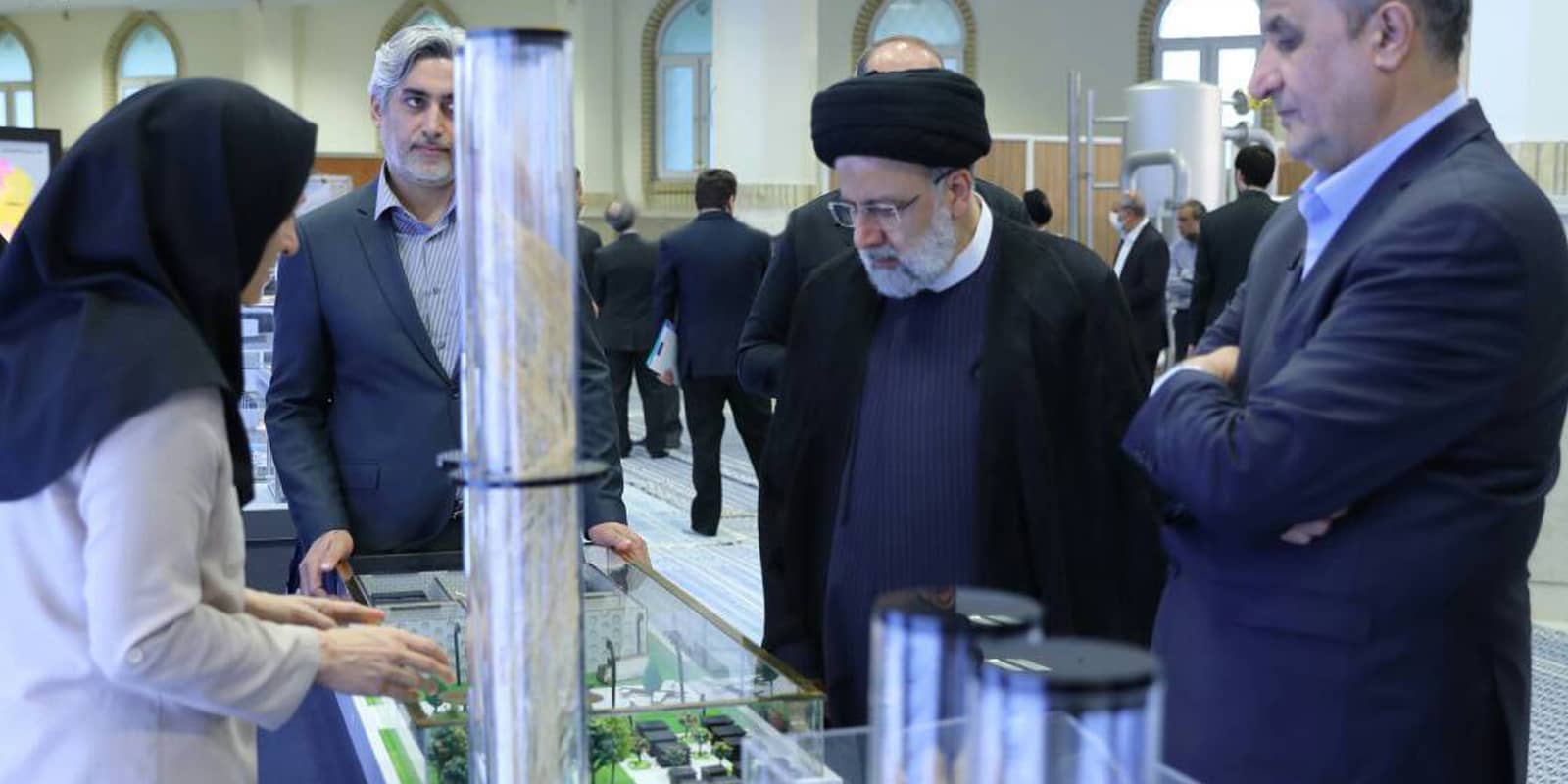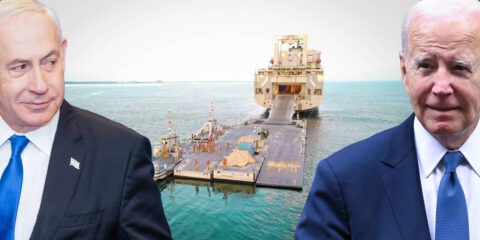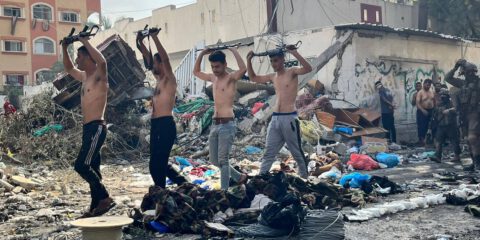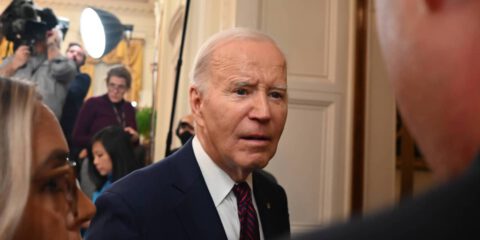Iran has significantly increased its stockpiles of uranium and according to estimates could produce enough Weapons Grade Uranium for a nuclear bomb within a week. There are indications Tehran is making progress toward tooling the parts of a bomb. Amid regional circumstances that are creating a window of opportunity, Israel must create legitimacy for action against Iran’s nuclear project.
The meeting (22-24 November 2023) of the Board of Governors of the IAEA was presented with mounting evidence of Iran’s progress towards military nuclear capability. A presentation by the E-3 (Germany, Britain and France) dwelled on Iran’s lack of cooperation, refusal to account for past activities, and its ongoing efforts, which constitute a grave threat: by some estimates, Iran can now dash within a week from 60% enrichment to enough WGU (Weapon-Grade Uranium) for a bomb, and a dozen bombs within five months. Still, under present circumstances, there is no prospect of coercive action by the IAEA, let alone the UN Security Council. Meanwhile, US friction with the IRGC, its proxies’ provocations against US troops in Iraq and Syria, and the Iranian-backed Houthi threats to international waters, have grown steadily more violent. Israel must, even at a time of war, ring the alarm bells, alerting American and Western decision-makers to what is at stake. Firm and immediate action is necessary: There may be no choice but to stop Iran by all means necessary, even as the war in Gaza is ongoing.
Iran draws closer to the bomb and expands its nuclear project
Since the last annual meeting of the Board of Governors of the International Atomic Energy Agency, and even since its Joint Statement with Iran of March 2023 (which was never honored) Iran has continued to accelerate its activities in a range of fields, all of which serve as decisive proof of its intention to achieve nuclear military capability.
These include:
- The continued accumulation of enriched uranium. At various levels: Iran has now more than 1,200 kg enriched to 2%, more than 2,200 kg at 5%, and at the higher levels – short leaps away from Weapon-Grade Uranium (WGU) – its stockpile of uranium enriched at 20% has risen by 30 kg to 567 kg; and at 60% has risen by 6.7 kg to 128 kg. It is blatantly in breach of the JCPOA limitations, and the higher levels of enrichment can have no other purpose than shortening the time necessary for the last leap to WGU (above 90%). This could be done in new and unsupervised facilities in a matter of a few months or even weeks.
- A rising potential for a “dash” to the bomb: the Washington-based Foundation for the Defense of Democracies thus estimates[1] that a batch of 25 kg WGU – enough for one bomb – could be produced, in some configuration of centrifuges, within one week, should Iran decide to do so. It has enough uranium enriched at 60% to produce the amounts for six bomb equivalents in a month, and up to 12 within five months.
- Enhanced activity also towards independent production of the raw material – uranium “yellow cake” produced from phosphates at two facilities, including a new one in Yazd province. As the Head of the Iranian Atomic Energy Commission, Muhammed Eslami, has declared, new technologies would enable Iran to raise production by more than 50%. Since 2010 Iran has been mining uranium on its own soil and producing its own yellow cake, and the number of mines is set to grow from two to ten. Moreover, there are gaps in the official accounting for the amounts of UF6, the gas fed to the centrifuges, being produced in Iran.
- Plans announced for the erection of several nuclear power stations in Iran. In addition to their civilian usage to produce power –and to provide an excuse for Iran’s possession of the full fuel cycle –they could also serve as plutogenic (Plutonium-producing) plants – a necessary by-product of power production –and thus as sources for fissile material. This too would be in breach of the JCPOA, which required Iran to disable its plutogenic reactor in Arak.
- As the E-3 statement, referred to below, mentions, there are also indications of work being done on uranium metal, indicative of progress towards tooling the parts of a bomb.
The Role of the IAEA
All this is happening while Iran is in open defiance of the IAEA. Eslami once again made it clear, in a formal statement (15 November 2023) that his agency rejects the IAEA’s repeated requests to reinstate the 8 European inspectors that Iran has barred from its territory. As a result, the inspection regime has been rendered ineffectual, and the IAEA is in no position to report that Iran is abiding by its NPT commitments, particularly as regards the possible military use of fissile material.
Moreover, the unresolved questions pertaining to the so-called “Possible Military Dimensions”, i.e., suspected activity related to the tooling of a bomb by Iran’s weapons group, EMAD, which was detected in four different sites two decades ago and may still be underway.
All this has led the E-3 group – Germany, Britain and France, who had also been parties to the JCPOA alongside the US, Russia and China – to present the IAEA Board of Governors with a sharply worded formal statement, warning that Iran’s conduct on these issues amounts to “frustration” of the IAEA’s work. Based on reporting by the Agency’s Director General, Rafael Grossi, the E-3 listed a number of further gaps, including the production of heavy water and stable isotopes; decried Iran’s “serious and escalating non-compliance”; and put the blame for the failure to return to the JCPOA squarely on Iran’s shoulders. The statement openly warns that “Iran’s nuclear advances significantly harm international security and undermine the global nonproliferation architecture”, and there are “increasing doubts about the peaceful nature of Iran’s nuclear programme”.
The statement called upon Iran to take immediate steps to allay these doubts:
- Stop all enrichment above 3.67% and start reducing the stockpile of uranium enriched above this level.
- Return to the agreed limitations on production and installation of centrifuges.
- Honor the transparency measures agreed with Grossi on March 4, 2023.
- Ratify and implement the Additional Protocol on inspections and re-instate the IAEA inspectors.[2]
The language, however, still refers – even in the face of such grave evidence and dramatic conclusions – to the quest for a solution by peaceful means. Despite their warning and Grossi’s reports, the Board of Governors did not initiate actual measures against Iran. It should be borne in mind that many in the “Global South” now harbor pro-Iranian (or rather, anti-American, anti-Israeli, and to some extent antisemitic) sentiments. As for the UN Security Council – which back in 2010 was still willing to pass a Chapter 7 resolution against Iran’s nuclear project – it is now unlikely and unable to take such action, given the certain veto by Russia, a firm ally of Iran (which had reciprocated by supporting Russia in Ukraine), as well as by China.
Re-focusing on the Nuclear Issue – Even as the War Continues
Under these circumstances it is incumbent upon the Israeli leadership, as well as the intelligence community and the relevant parts of the defense and foreign policy establishment, to ring the alarm bells and re-focus attention (internally, in terms of tasks and resources, and internationally, on the challenge posed by the Iranian nuclear project. Even if the IAEA and the UN institutional system fail us, Israel could use the IAEA concerns and the worrisome E-3 language to explain its own choice of diplomatic and military actions – and raise the urgent need for a paradigmatic shift in US and European attitudes towards Tehran.
Indications of such a shift are already notable in the E-3 statement of March 2023 and more firmly in that of November 2023. The Iranian support for Russia in Ukraine exacerbated tensions further, as did the repression of the Hijab protests: but notably, the Biden Administration persisted in its efforts to reach (in stages?) a renewed JCPOA. The US even agreed to a deal under which billions of dollars in frozen Iranian assets could be made available – in return for American citizens detained in Tehran.
This conciliatory position may no longer be tenable. Tensions are rising. More than 75 attacks against the American presence in Iraq and Syria were met with several American counterstrikes against IRGC targets and associated militias. CENTCOM put the blame (4 December), for the Houthi attacks on international shipping, squarely on Iran, and US Navy vessels have been involved in several intercepts. As these tensions grow, so does the legitimacy of Israel’s warning that Iran – and its nuclear project – must remain the focus of attention. It is an active short-term threat that must be dealt with, at this stage, by a combination of aggressive sanctions and a credible military threat.
Israel’s leadership must engage once again in generating the necessary legitimacy for action against Iran’s nuclear project – preferably by non-kinetic means, but violently if necessary. This can be done in conjunction with other concerned nations, but alone if necessary. The current level of readiness facing Hizbullah in the north, and the growing signs of Lebanese reluctance to be drawn into an all-out destructive war, create a window of opportunity for such action in the coming weeks and months.
[1] Andrea Stricker, David Albright, Sarah Burkhard and Spencer Faragasso, “Analysis of IAEA Iran Verification and Monitoring Report, November 2023”, FDD – https://www.fdd.org/analysis/2023/11/20/analysis-of-iaea-iran-verification-and-monitoring-report-november-2023/
[2] See https://www.gov.uk/government/speeches/e3-statement-at-iaea-board-of-governors-on-the-jcpoa-nov-2023
JISS Policy Papers are published through the generosity of the Greg Rosshandler Family.
Photo: IMAGO / ZUMA Wire








 - בניית אתרים
- בניית אתרים